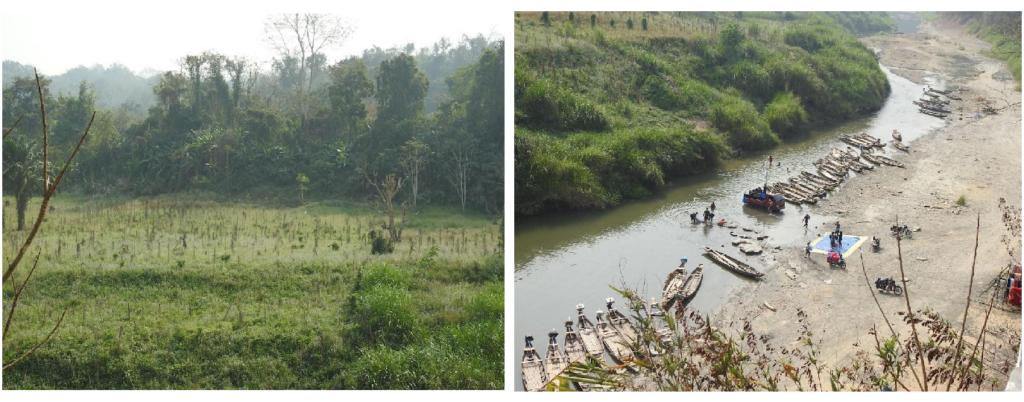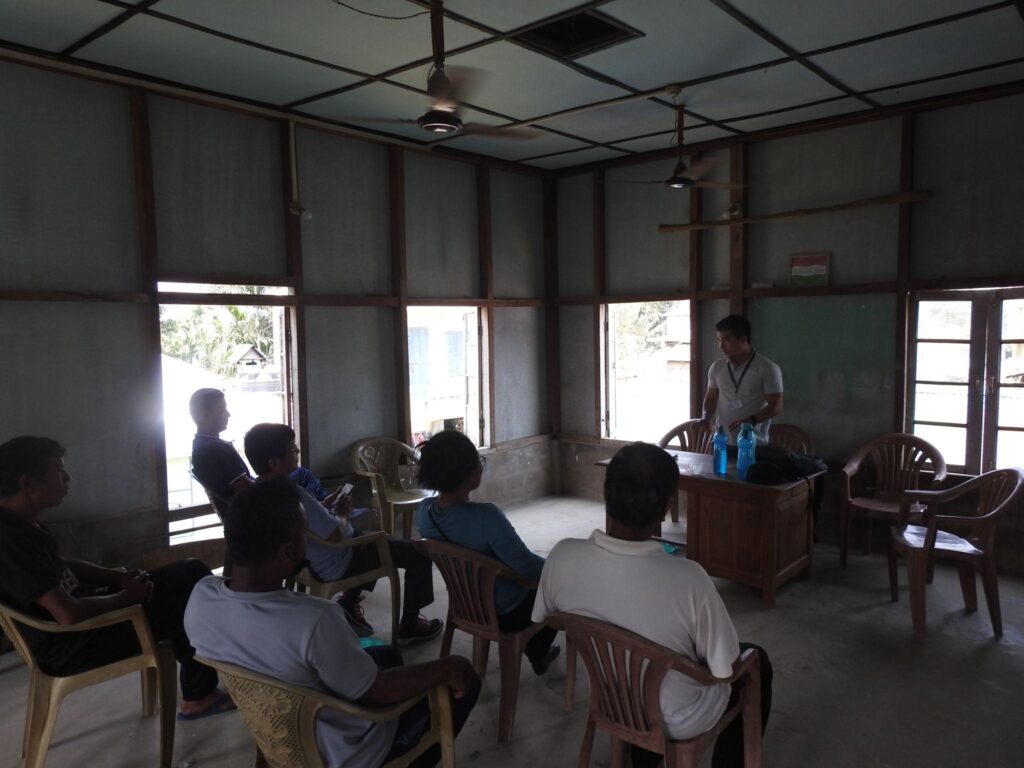HORTOKI
Home > STI Needs on Spatial Domain > HORTOKI
Hortoki is a village of 560 houses and a population of 3000. The village is situated in the north western part of Mizoram along the banks of river Tlawng. It is an agricultural based village that claims to be an organic village. Hortoki have co-operative societies such as farmer Interest Group, Service Co-operative Societies, and Nul siam group.
The major livelihood of the village depends on farming. More than 60 percent of the families depend on farming in the small area of land along the edge of the river covered with fertile soil brought by the river. Mustard and other green leafy vegetables are most commonly grown in the river banks. These green leafy vegetables are then transported via river. And finally reach markets of cities and towns of different parts of the state.
Settled farming and gardening is also commonly practised in which vegetables commonly grown include brinjal, mock tomatoes, pumpkin, beans etc. These vegetables are mostly sold in Aizawl markets and they claim to be one of the biggest suppliers of vegetables in the Aizawl market.
Apart from vegetables, hortoki village is also one of the biggest producers of fruits in Mizoram. The village is known for its high production of a semi-wild species of citrus called citrus macroptera locally known as ‘hatkora’.
Hatkora is only used for production of juices in Mizoram. In other countries, it has several uses like consumption of the thick fleshy rind as a vegetable or with meat products, sun dried for later consumption with vegetable or meat products, and for making pickles. Other potential applications in industry include utilisation of their oils in the perfume industry and pectin production from the fruit peel.

Hatkora is not used for production of any value-added products except juices, every year the surplus production spoils away which is a big loss for the farmers. There is a need to improve the current value-added products made from hatkora. This will prevent losses and at the same time bring income to the hatkora growers as well as the people engaged in the processing and marketing.
Marketing – The agricultural products are taken by middlemen to be sold to markets in the cities. Due to poor market linkage, vegetables like pumpkin and brinjal are sold at five rupees per kg while the market rate in cities is about forty rupees per kg.

Needs:
- Soil management and soil testing – Many of the fruit trees dry and wither away in the past few years. The vegetable crops such as brinjal and mock tomato have been having disease that makes the leaves curl and unhealthy.
- Training program to farmers who depend on farming for their livelihood. There have been cases of crop infestation that causes huge losses to the farmers. The farmers have little knowledge on soil management, plant protection, and utilisation of fertilisers.
- Power tiller for ploughing and land preparation.
- Better market chain. The pricing of the agricultural produce is controlled by merchants and middlemen who earn more from the crops compared to the farmers.
- Infrastructure for post-harvest storage – Due to lack of infrastructure facilities for maintaining the quality, the farmers are often forced to sell their produce at minimum costs due to fear of spoilage.
- Training on post-harvest handling and preserving the keeping quality of fresh fruits and vegetables.
Water irrigation facility for agricultural land is another major necessity. There is a good water source but not the technology to bring it to agricultural use.
